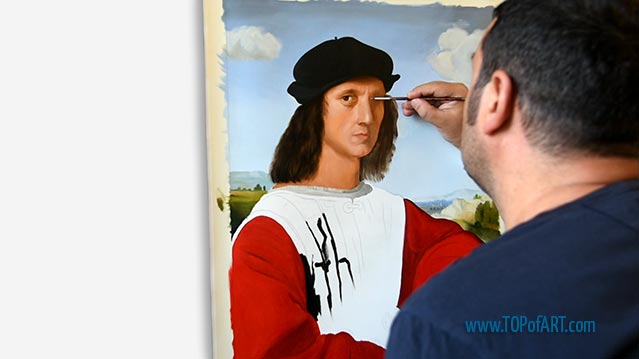The 3rd of May 1808 in Madrid, 1814 Francisco de Goya (1746-1828)
Location: Prado Museum Madrid SpainOriginal Size: 268 x 347 cm
Oil Painting Reproduction
If you want a different size than the offered
Description
Painted by European Аrtists with Academic Education
Museum Quality
+ 4 cm (1.6") Margins for Stretching
Creation Time: 6-8 Weeks
Creation Process
We create our paintings with museum quality and covering the highest academic standards. Once we get your order, it will be entirely hand-painted with oil on canvas. All the materials we use are the highest level, being totally artist graded painting materials and linen canvas.
We will add 1.6" (4 cm) additional blank canvas all over the painting for stretching.
High quality and detailing in every inch are time consuming. The reproduction of Francisco de Goya also needs time to dry in order to be completely ready for shipping, as this is crucial to not be damaged during transportation.
Based on the size, level of detail and complexity we need 6-8 weeks to complete the process.
In case the delivery date needs to be extended in time, or we are overloaded with requests, there will be an email sent to you sharing the new timelines of production and delivery.
TOPofART wants to remind you to keep patient, in order to get you the highest quality, being our mission to fulfill your expectations.
We not stretch and frame our oil paintings due to several reasons:
Painting reproduction is a high quality expensive product, which we cannot risk to damage by sending it being stretched.
Also, there are postal restrictions, regarding the size of the shipment.
Additionally, due to the dimensions of the stretched canvas, the shipment price may exceed the price of the product itself.
You can stretch and frame your painting in your local frame-shop.
Delivery
Once the painting The 3rd of May 1808 in Madrid is ready and dry, it will be shipped to your delivery address. The canvas will be rolled-up in a secure postal tube.
We offer free shipping as well as paid express transportation services.
After adding your artwork to the shopping cart, you will be able to check the delivery price using the Estimate Shipping and Tax tool.
Museum Quality
The paintings we create are only of museum quality. Our academy graduated artists will never allow a compromise in the quality and detail of the ordered painting. TOPofART do not work, and will never allow ourselves to work with low quality studios from the Far East. We are based in Europe, and quality is our highest priority.
1 Reviews
5.00 Overall rating
The scene represents an episode in the reprisals of the French troops. A mass execution is taking place. Three dead bodies lie in the blood; a monk and five men on the left are receiving the volley. Near them, coming up along the wall illuminated by a lantern, is another file of the condemned. It is night; against the dark sky, a church and some houses; in the foreground, circled with penetrating light and cast shadows, the brutal, merciless execution.
Our attention is attracted by the figure of the condemned man in a white shirt with his arms raised who is defying the killers, bent over and absorbed in taking aim, while the monk prays and other men make despairing gestures. It is an evocation terrible in its incisiveness, almost premonitory of more recent episodes of ferocious and indiscriminate massacre. And certainly, without a great ethical force, a profound intuition of man's barbarism, Goya could not have expressed with such Homeric gravity this supreme moment in which the millennial cult of violence and death is celebrated. His human participation in the event is grasped in the picture's atmosphere of a tragedy that has been suffered.
This is not the case in Manet's Execution of Maximilian, which was inspired by Goya's work. In Manet's painting a sort of sceptical detachment prevails, with the interest in the pictorial problem serenely dominating all else; a feeling that has no part in this terrible, fulminating epic of modern barbarism.






